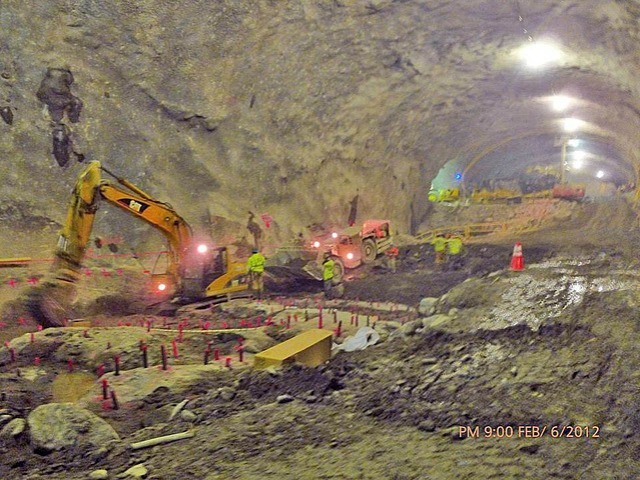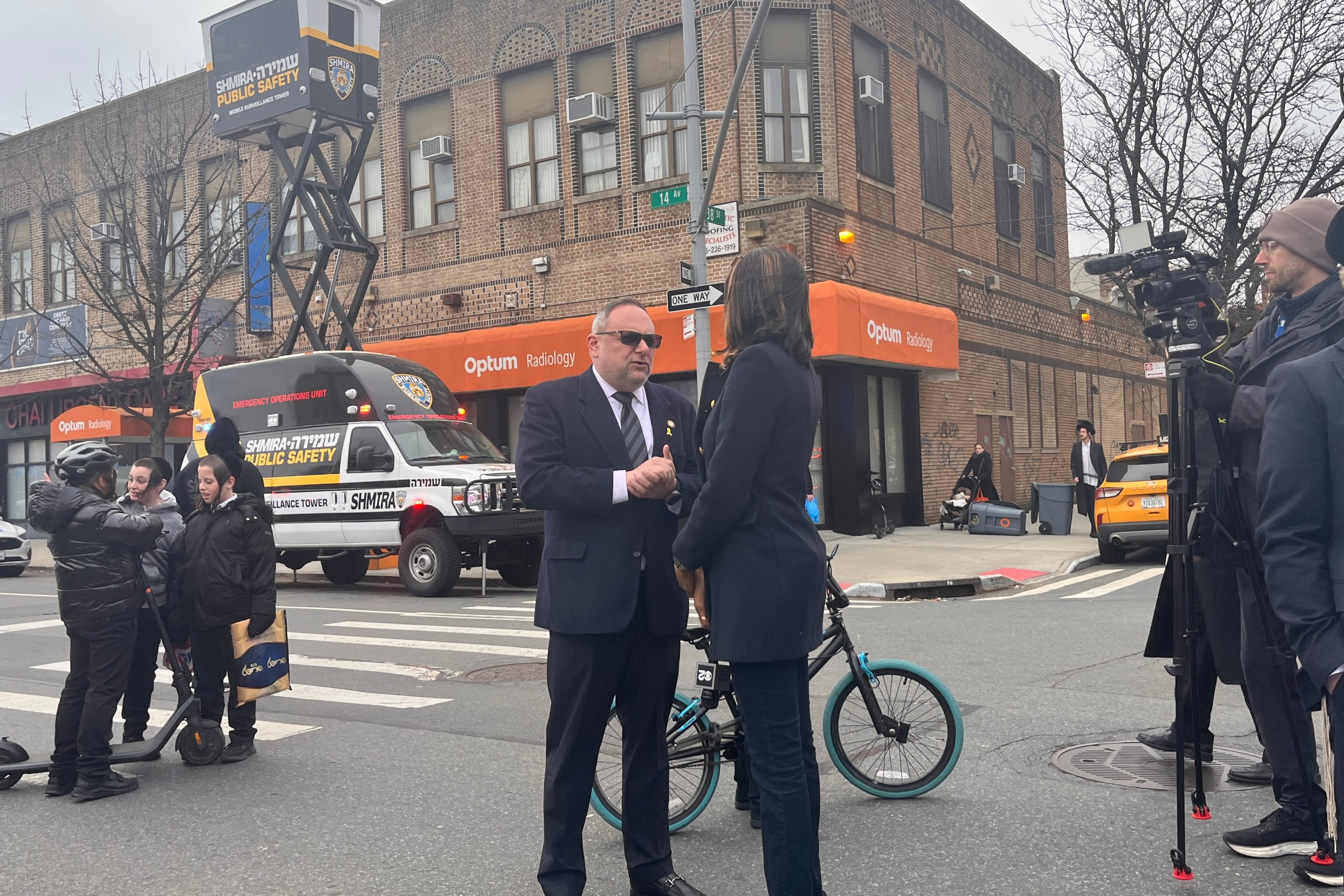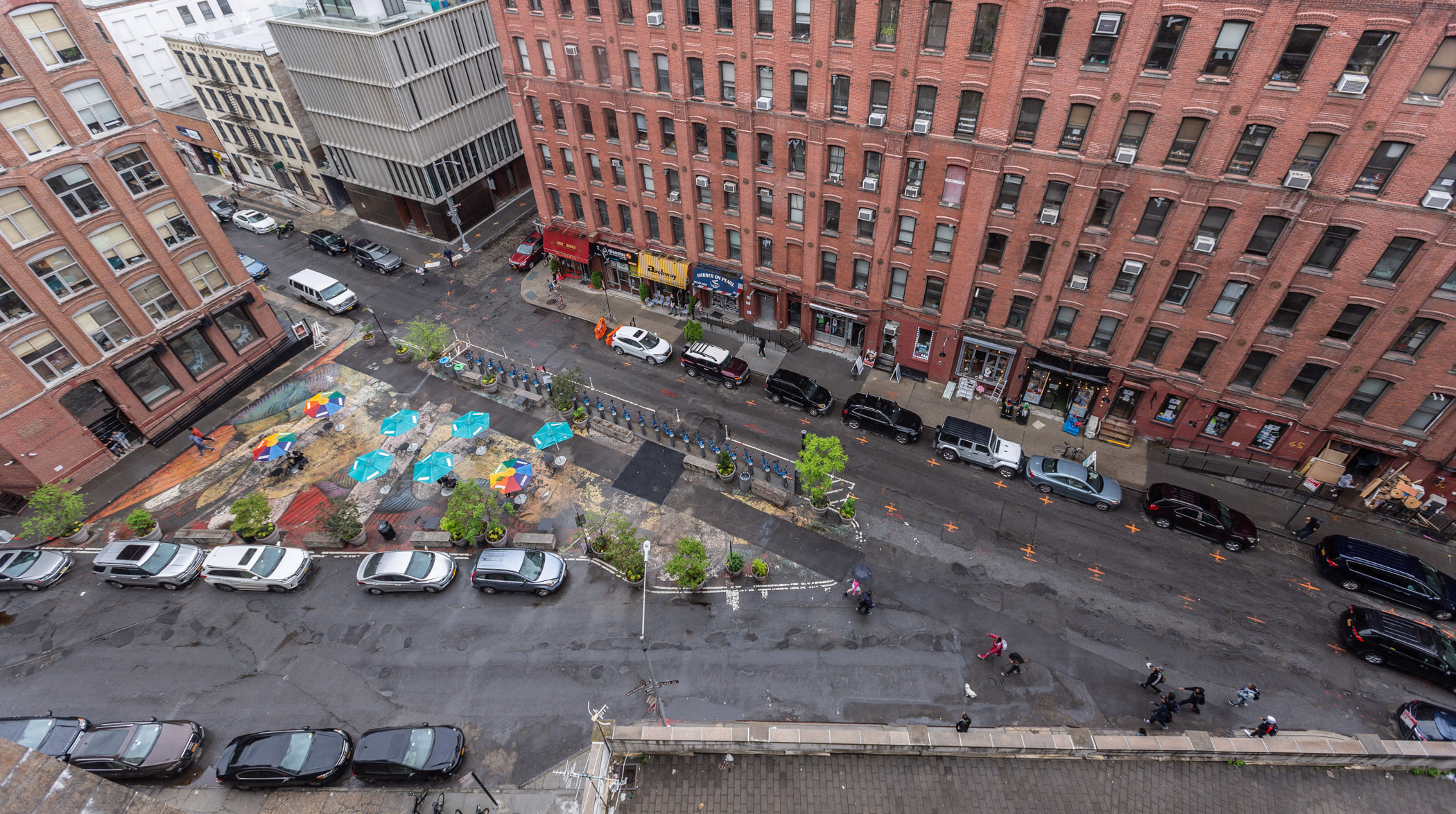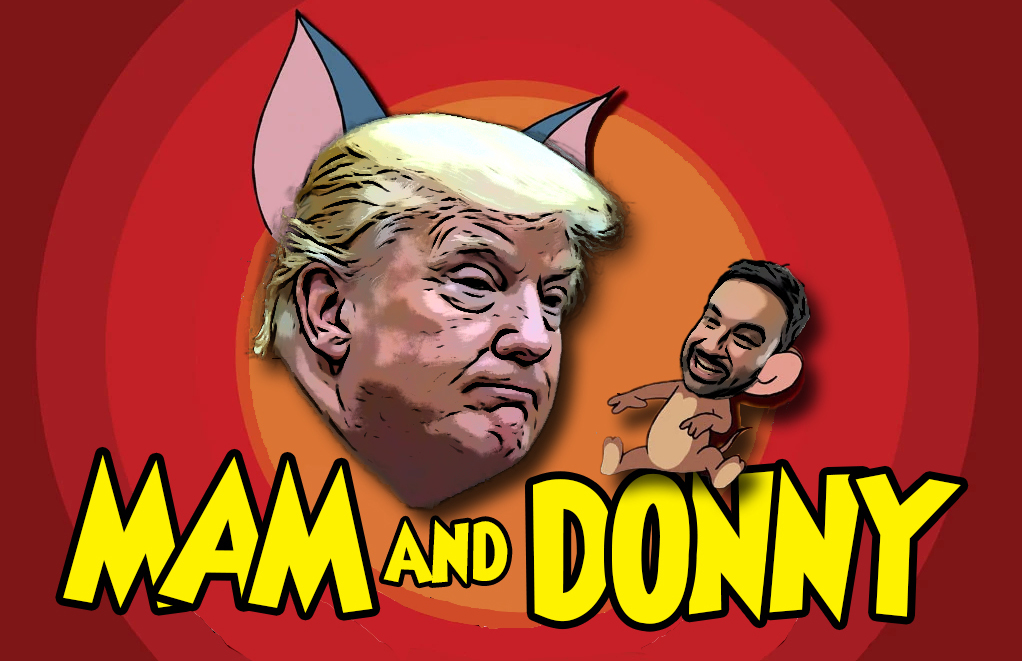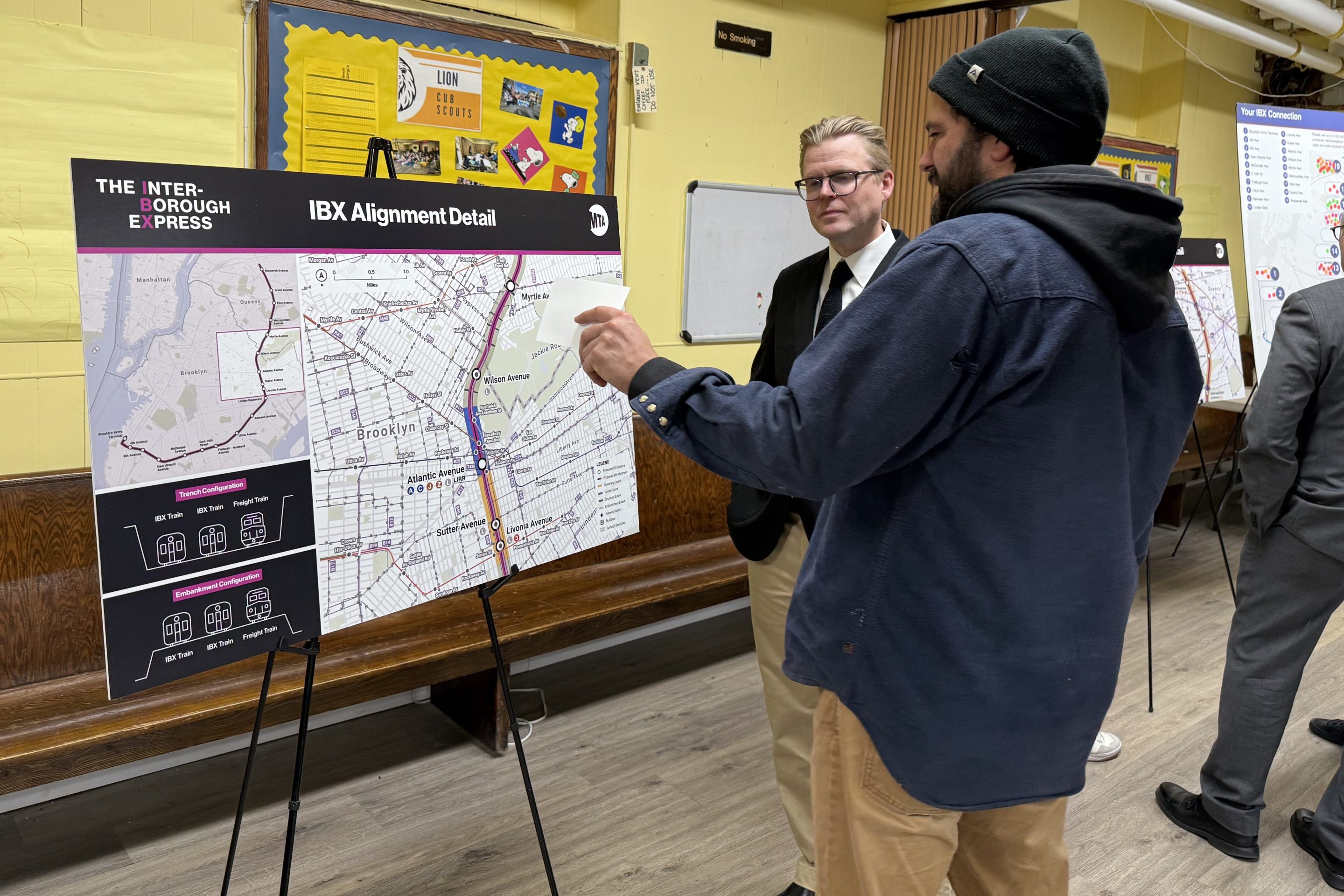
Earlier this week Streetsblog sat down with General Contractors Association Managing Director Denise Richardson for a wide-ranging discussion on the financial state of New York's transportation systems. In the first installment of the interview, we discussed the MTA's capital program, which is moving forward with important repair work but saddling transit riders with huge amounts of debt, and the inability of the federal government to pass a new transportation bill.
In the second part of our conversation, we discussed New York's highway system, which consumes hundreds of millions of dollars in general taxes a year, and Governor Cuomo's enigmatic New York Works Fund. We also touched on why construction costs are high and always seem to get higher, and the timing of transit construction on the Tappan Zee Bridge replacement.
Noah Kazis: I want to ask about the New York Works plan. To start off, what is the New York Works plan, in your mind?
Denise Richardson: Well I know what I’ve read in the papers.
If you look at New York’s history, we are a state that developed around our infrastructure. New York, from colonial times, was a business city, it focused on trade. The Erie Canal, the railroads, the road system. We are an infrastructure state, even though we pretend not to be. The governor said, "Where do we stack up nationally, in terms of infrastructure?" And that was not a very good picture at all. In a state that needs to create jobs, the linkage was obvious. And I think it’s a great program.
"We have to stop treating the public like idiots. If we’re going to do some major public works project, we should tell the public what it’s really going to cost."
My concern about it is obviously funding. The governor has made the statement that he doesn’t want to raise taxes. I think that to make New York Works a permanent part of the infrastructure funding strategy, there needs to be real money there. His discussions about tapping pension fund investments --pension funds are seen as a source of easy money, but there are a lot of issues associated with pension fund investments. As a trustee on some pension funds, I can tell you that it’s not as easy as it sounds. There needs to be a very stable rate of return, tied to very definite revenues, and that’s not saying, "The state guarantees to pay." From what revenue source?
But I think the fact that the governor announced that Felix Rohatyn is going to head it up -- everyone living in New York City, if they don’t know who he is, should learn, since he was instrumental in saving the city -- I think the fact that he has once again come to the fore gives us a level of confidence that it will be a stable, funded program.
NK: To confirm, there haven’t been any sort of real monies attached to the New York Works yet?
DR: Not that I’ve seen. Hopefully, as the governor puts the team together, I’m sure that the funding pieces will fall into place.
NK: The other question that we’ve had outstanding about the program is the number of statements saying that transit wouldn’t be included. But given that the fund is still taking shape, it’s never been clear what that actually means.
DR: I’m not sure what that means. Hopefully, the MTA will become part of it.
NK: On the roads side of things, it seems like the Highway and Bridge Trust Fund is in even more financial trouble than the MTA.
DR: You bet.
NK: They’re getting what, about $600 million a year transferred in from the general fund?
DR: Yep.
NK: So what would it take to right that ship financially?
DR: Part of the problem with the state Highway Trust Fund is that it was used for a lot of other things, Department of Motor Vehicles operations, snow plowing. You can’t take a dedicated capital fund and use it for operating expenses. That is number one.
Number two, its revenue sources need to be evaluated. We feel very strongly that the sales tax on gasoline, which people don’t even realize they pay, is going into the general fund. It’s the same sales tax as on anything else. We’ve always been very strong advocates of the sales tax on gas going towards funding transportation capital improvements. Other states take some of their sales taxes on vehicles and tires and dedicate that toward infrastructure improvement.
NK: In a world where the state DOT and the Thruway Authority and the Bridge Authority may get merged, does tolling become part of the conversation?
DR: Tolling needs to be part of the conversation. But right now, you have a situation where for the Thruway Authority, the Tappan Zee Bridge subsidizes the rest of the system. With us getting ready to build the new Tappan Zee Bridge and needing to pay for it somehow, the question remains, will the new Tappan Zee Bridge still be able to maintain its same level of tolls, and pay for the new bridge, and continue to subsidize?
NK: You seem skeptical.
DR: I think there’s a lot of math that needs to be done in that equation.
NK: The final thing that I wanted to ask you about was construction costs. Why are they higher in the United States? Why do we see cost overruns so often? What’s the difference between American transportation construction costs and European, where New York City subway costs are, I think 50 to 200 percent higher than even London?
DR: London is a good comparison, because it is a dense urban environment. Here in the United States, on any kind of construction project, we want the project, we think, but we don’t want the inconvenience that comes along with building the project. So we spend a lot of money trying to make the construction project as unintrusive as possible.
London has an environmental review process, not as convoluted as ours, but there’s still an environmental review process, attention is paid to neighborhood impacts. But once the decision is made to build the project, the project gets built. The public mindset is, "Let’s get out of the way. Let’s get the project built." I think Congresswoman Maloney made the best statement about the neighborhood impacts of the Second Avenue Subway. She said, "The best thing to do for the neighborhood is to let them build the project and finish it," as opposed to stopping and mitigating and stopping and mitigating. I think that’s a big driver.
NK: Would you say that the addition of mitigations is also driving the fact that you can almost assume that a given project will go over its initial costs by the time it’s completed?
DR: Look, from my years on the government side, and unfortunately having been involved in some of the agencies I’ve worked at with the capital budget process… the Big Dig, that’s kind of the textbook example. The Big Dig changed the face of Boston. Boston now is magnificent. It really is, and it wasn’t when you had the Southeast Expressway cutting through the center of the city. But the Big Dig was lowballed from the get go, because they needed to fit it into a budget. The public sector in New York does the same thing.
You start out with this very conceptual estimate of what a project may cost, based on similar projects in other places, based on data that the engineering consultants keep. Then you start to put the details together, but you never change the budget. You’re always stuck with that one number. Well, by the time you get to your actual project, the project is very different from when you did the budget. It is probably the thing that gives the industry such a poor reputation, because it looks as though every project never comes in on budget. The World Trade Center is a great example of that. The public sector and the private sector, we have to stop treating the public like they’re idiots. If we’re going to do some major public works project, we should tell the public what it’s really going to cost.
NK: Is there anything legislatively or administratively that could make construction easier or accounting more transparent?
DR: We have to look at the whole environmental review process. When you look at the Tappan Zee Bridge, how could we have spent 10 years and $88 million studying the replacement of the bridge? We’ve known for the last 10 years, probably longer, that the bridge needed to be replaced.
I also think that the whole permitting process is also very costly, very convoluted, very cumbersome.
Talking about government contracting in New York, on the part of the owner agencies it’s designed to shift all risk to the contracting entity and the designer. Risk equals cost, so what you end up with is the contractor assuming the risk and pricing the risk accordingly. Whereas if we had a different mechanism for working together to resolve unknowns, deal with issues as they come up in a non-adversarial manner, you would see construction bids starting to decrease. It’s a risk sharing, and therefore a cost sharing, scenario.
NK: On the environmental review, though, it seems like the example of the Tappan Zee Bridge is telling. Suddenly the environmental review gets expedited and you have a lot of people complaining quite loudly that the pieces they wanted suddenly disappeared and they have no recourse. So how do you balance that?
DR: What got lost somewhere is that building a new bridge and making it able to accommodate transit versus having mass transit on the bridge the day it opens are two separate things. And in order to have a working functioning transit system, you need to put that transit system in the context of a larger network. So you have to look at what should be the stops? What are the park and ride availabilities? Does it connect with the Tarrytown Metro-North Station? You can construct the bridge while all those discussions are taking place. The bridge is designed; the design criteria for the bridge include making it transit ready. The way the debate looked to me, and I’m looking at it from the construction point of view, it’s going to take five years to build this bridge. So while we’re building this bridge, let’s figure all this out.
NK: I think part of the worry is that no one sees the transit planning continuing. That seems to have been halted while we build the bridge.
DR: That’s the job of the transit advocates. The first thing to do is build the new bridge. The next step is to make sure that there is a transit network available. And that’s where the commuters in Rockland, the commuters in Westchester, the people going to use the bridge really need to keep the pressure on their officials.
